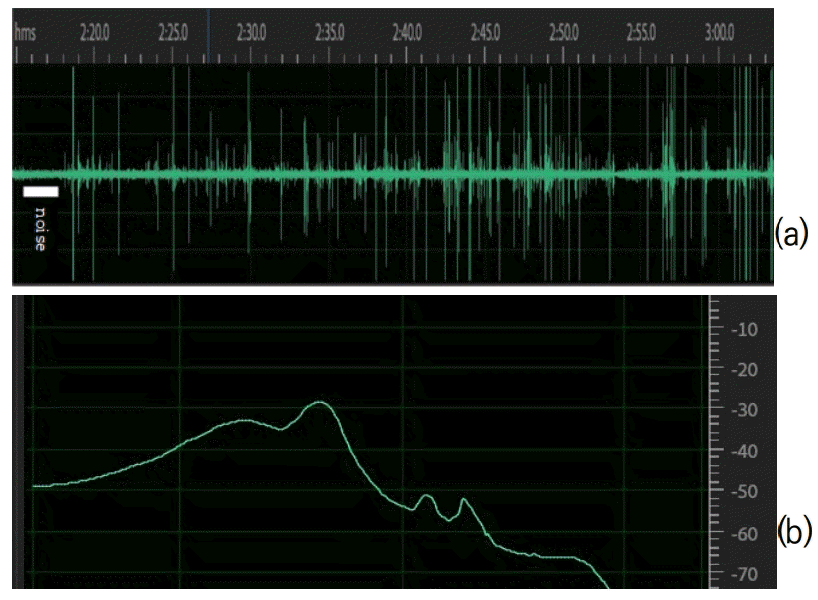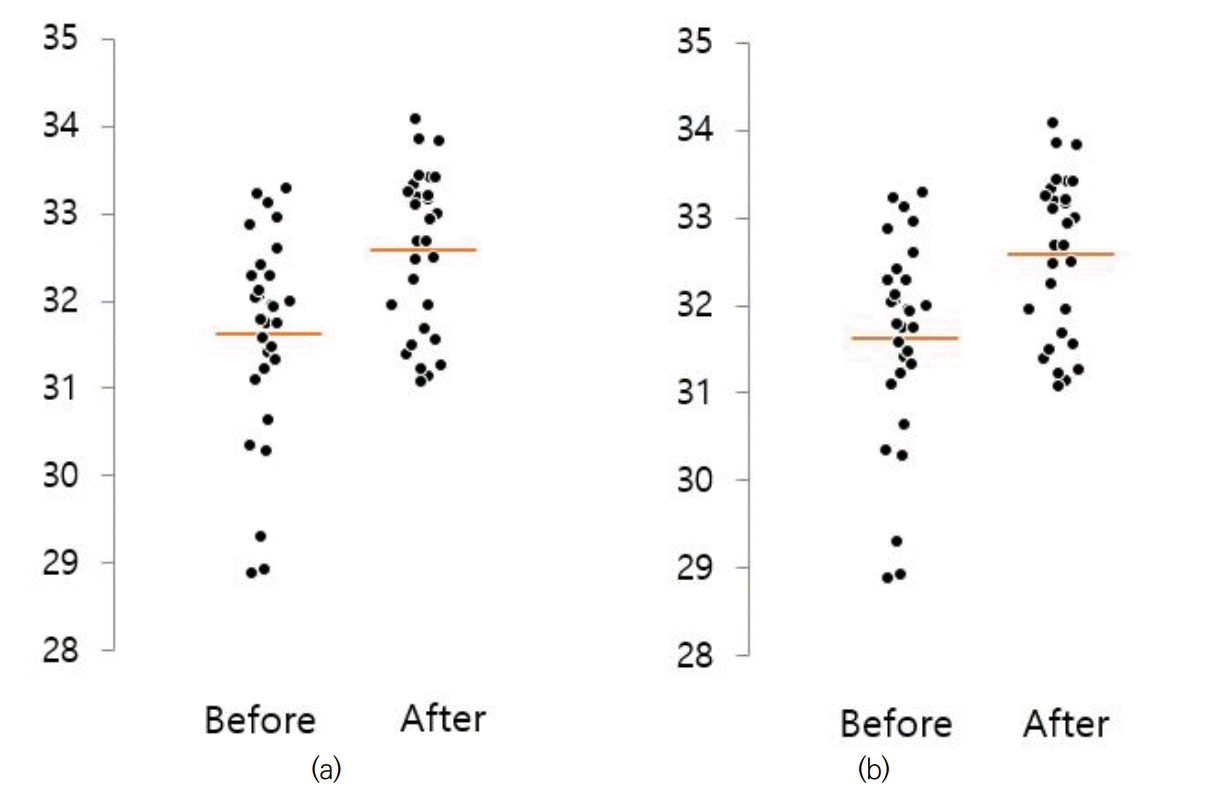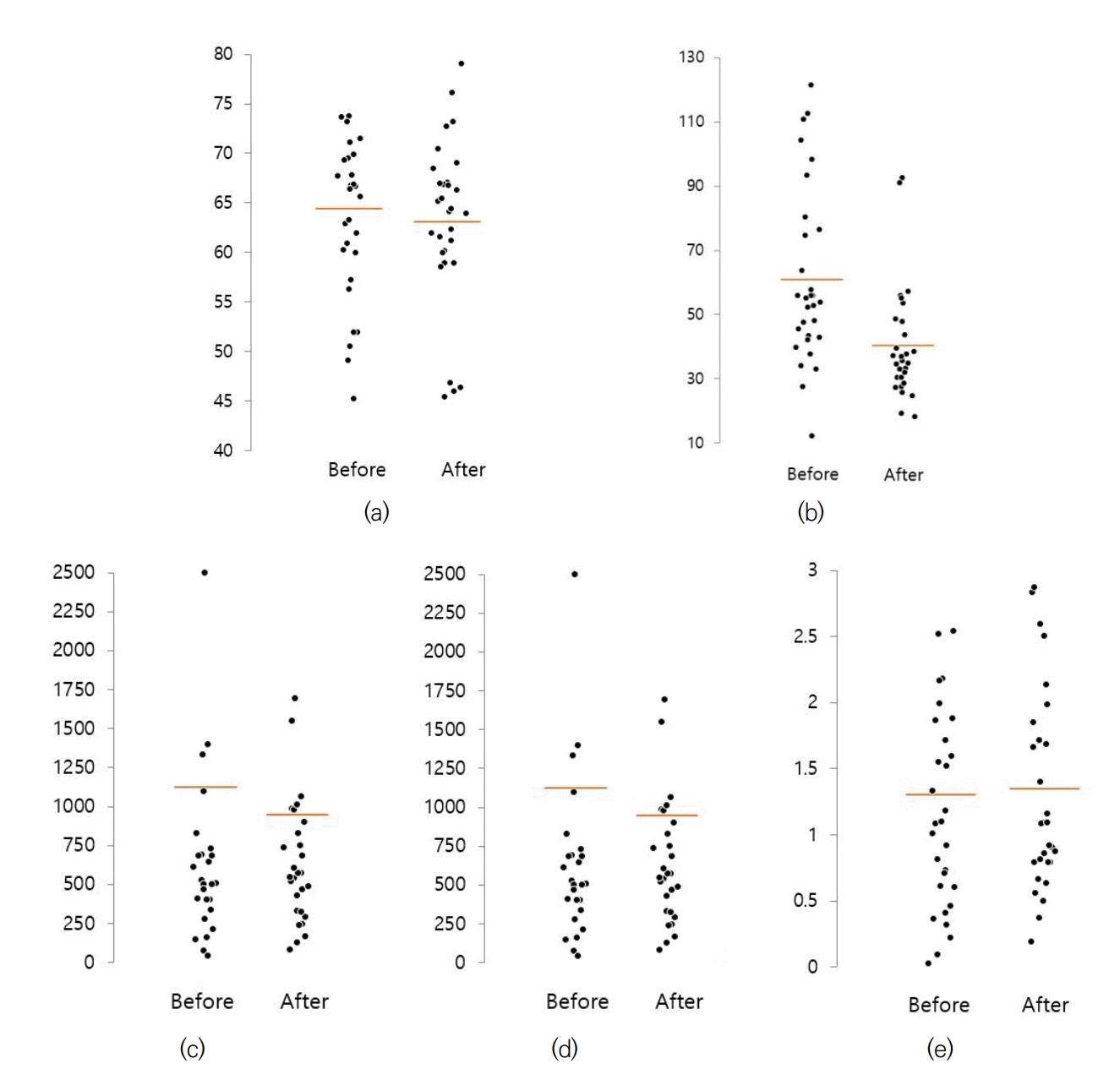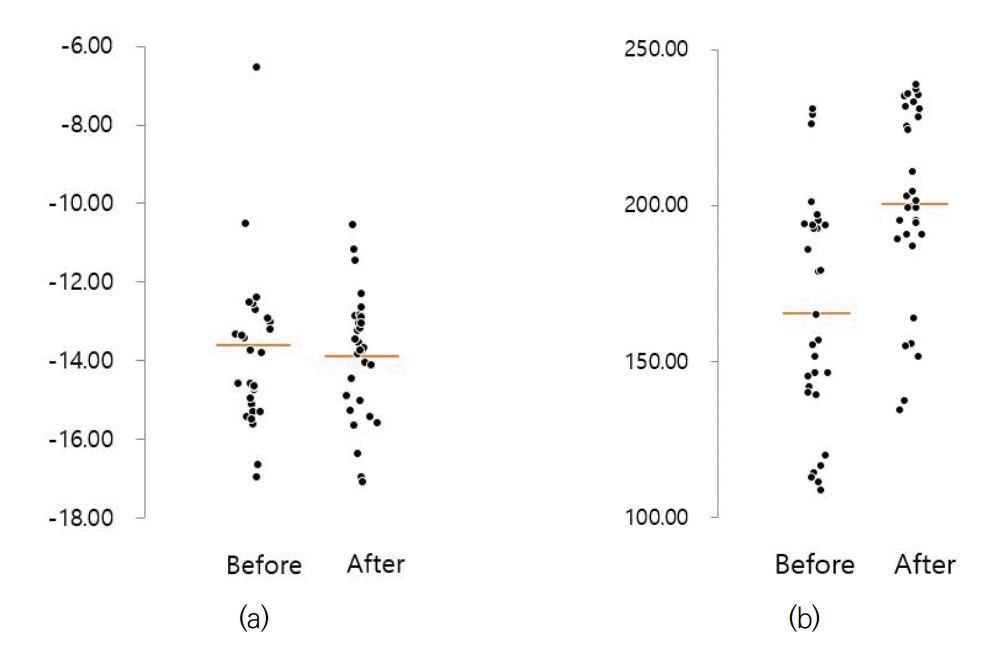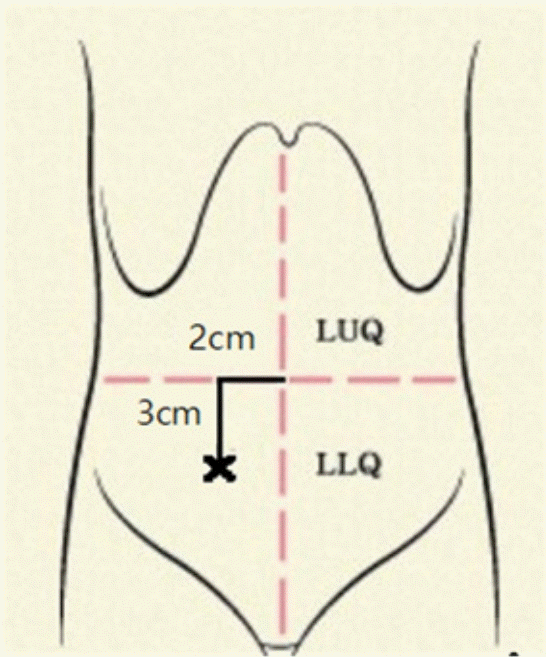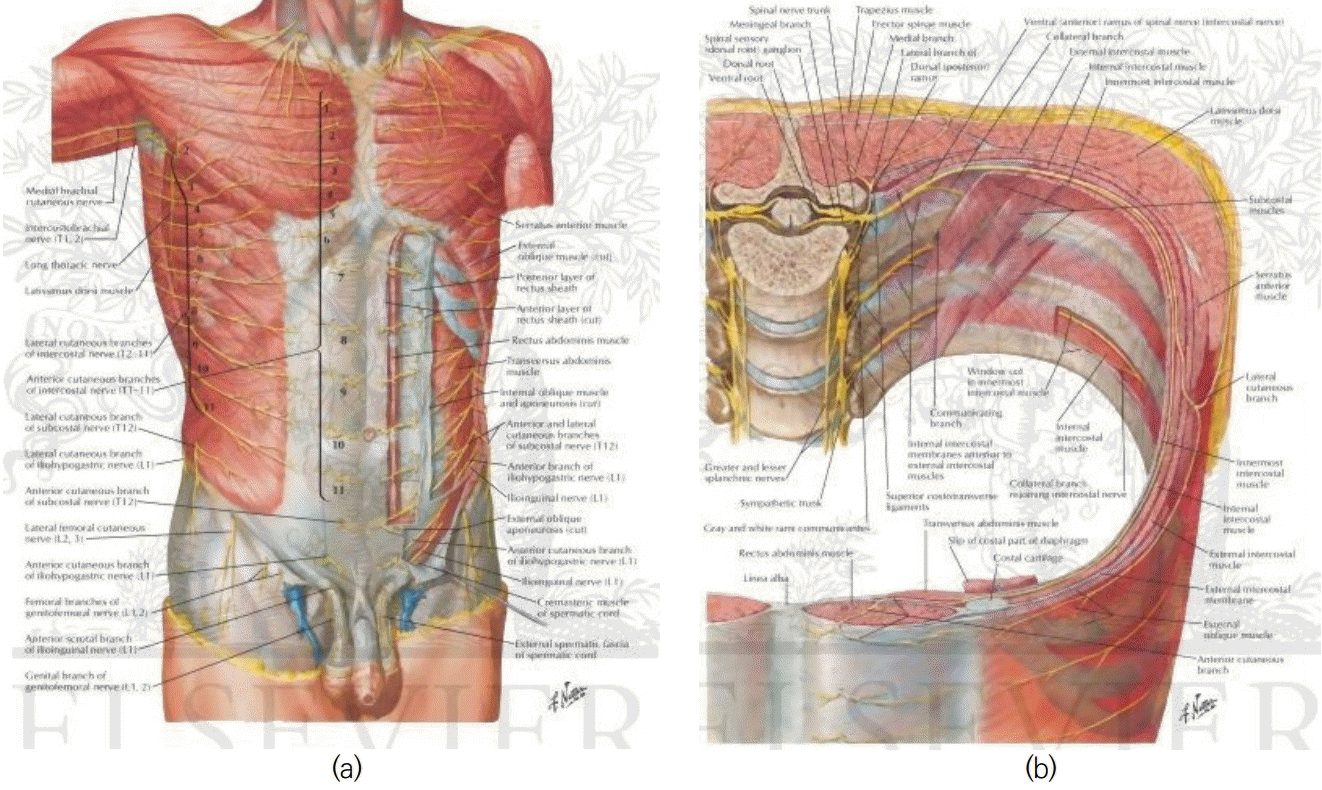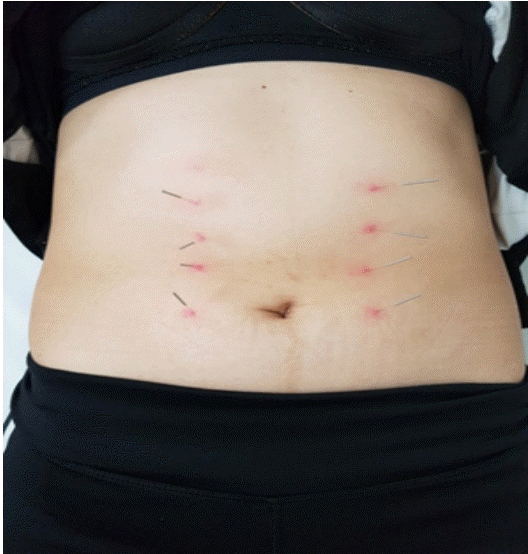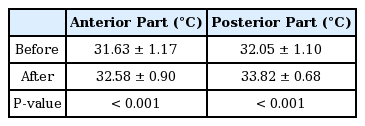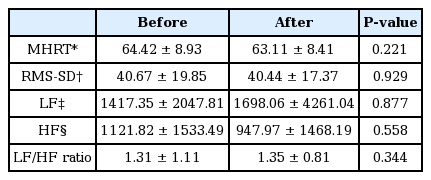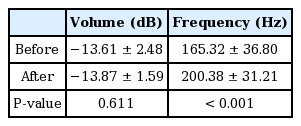References
1. Drossman DA. Functional Gastrointestinal Disorders: History, Pathophysiology, Clinical Features and Rome IV. Gastroenterology 2016;150(6):1262–79.
2. Li YQ, Zhu B, Rong PJ, Ben H, Li YH. Neural mechanism of acupuncture-modulated gastric motility. World J gastroenterology 2007;13(5):709–16.
3. Phillips RJ, Powley TL. Innervation of the gastrointestinal tract: patterns of aging. Autonomic neuroscience : basic & clinical 2007;136(1–2):1–19.
4. Kim BJ, Hong JW, Hwang MW, Chae H. Systemic analysis for research strategy establishment of gatrointestinal disease with Oriental medicine in Korea. Korean J Oriental physiology&pathology 2009;23(6):1273–81.
5. Kim BY, Seo BN, Park JE, Yang CS, Kim IT, Lym JW, et al. A systematic review of acupuncture-moxibution treatment for functional dyspepsia. Korean J acupuncture 2017;34(1):8–36.
6. Kim YS, Yoon SH. Combination Effects of Zusanli (ST36) Electroacupuncture and Manual Acupuncture of other Acupoints on Gastric Vagal Nerve Activity and Pyloric Valve Function in Patients with Functional Dyspepsia. J Korean medicine 2008;29(3):621–8.
7. Ma TT, Yu SY, Li Y, Liang FR, Tian XP, Zheng H, et al. Randomised clinical trial: an assessment of acupuncture on specific meridian or specific acupoint vs. sham acupuncture for treating functional dyspepsia. Aliment Pharmacol Ther 2012;35(5):552–61.
8. Noguchi E, Ohsawa H, Tanaka H, Ikeda H, Aikawa Y. Electro-acupuncture stimulation effects on duodenal motility in anesthetized rats. Jpn J Physiol 2003;53(1):1–7.
9. Sato A, Sato Y, Suzuki A, Uchida S. Neural mechanisms of the reflex inhibition and excitation of gastric motility elicited by acupuncture-like stimulation in anesthetized rats. Neurosci Res 1993;18(1):53–62.
10. Sato A, Sato Y, Uchida S, eds. Reflex modulation of visceral functions by acupuncture-like stimulation in anesthetized rats. J international congress series 2002;1238:111–23.
11. Yang M, Li X, Liu S, Li Z, Xue M, Gao D, et al. Meta-analysis of acupuncture for relieving non-organic dyspeptic symptoms suggestive of diabetic gastroparesis. BMC complement Alternative Med 2013;13(1):311.
12. Jee SR, Jung HK, Min BH, Choi KD, Rhee PL, Kang YW, et al. Guidelines for the treatment of functional dyspepsia. Korean J gastroenterol 2011;57(2):67–81.
13. Cramer G, Darby S. Basic and Clinical Anatomy of the Spine, Spinal Cord, and ANS 2nd edth ed. Yang JY. Seoul: Koon Ja; 2005. p. 452–4.
p. 481–90.
p. 512–8.
14. Mol FM, Lataster A, Scheltinga M, Roumen R. Anatomy of abdominal anterior cutaneous intercostal nerves with respect to the pathophysiology of anterior cutaneous nerve entrapment syndrome (ACNES): A case study. Translational research in anatomy 2017;8:6–10.
15. Netter FH. Atlas of Human Anatomy 4th edth ed. New York: Elsevier Health Sciences; 2017. p. 164p. 167p. 180p. 192p. 257–8.
16. Ching SS, Tan YK. Spectral analysis of bowel sounds in intestinal obstruction using an electronic stethoscope. World J gastroenterology 2012;18(33):4585–92.
17. Srinivasan R, Greenbaum DS. Chronic abdominal wall pain: a frequently overlooked problem. Practical approach to diagnosis and management. Am J gastroenterology 2002;97(4):824–30.
18. Sung JW. Pain’s Principle and Insight Soeul: Koon Ja; 2016. p. 219–54.
19. Ombregt L. A system of orthopaedic medicine 3rd edth ed. Lee JC, Lym HS, Jung JW, Jung JH, Jung JP. Seoul: Han Mi; 2015. p. 379–87.
20. Hwang EM, Wang GH, Bae JI, Keum DH. The effect of dry cupping treatment applied to Back-shu points on the autonomic nervous system through HRV. J Korean medicine of rehabilitation 2013;23(1):51–64.
21. Park JK, Huh KC, Shin CM, Lee H, Yoon YH, Song KH, et al. Current issues in functional dyspepsia. Korean J Gastroenterol 2014;64(3):133–41.
22. Yoon SH. Postprandial epigastric fullness and pyloric valve disturbance in patients with functional dyspepsia-Analysis of bowel sounds and electrogastrography. Korean J Orient Int 2007;28(4):769–78.
23. Yoshino H, Abe Y, Yoshino T, Ohsato K. Clinical application of spectral analysis of bowel sounds in intestinal obstruction. Dis Colon Rectum 1990;33(9):753–7.
24. Gobbo M, Maffiuletti NA, Orizio C, Minetto MA. Muscle motor point identification is essential for optimizing neuromuscular electrical stimulation use. J Neuroeng Rehabil 2014;11(1):17.
25. Park JW, Keum DH. Comparison Study about Surface Mapping of Motor Points in Biceps Brachii Muscle Using Surface EMG and Electric Probe. J of Korean medicine of rehabilitation 2018;28(1):85–96.
26. Applegate WV. Abdominal cutaneous nerve entrapment syndrome (ACNES): a commonly overlooked cause of abdominal pain. Sergery 2002;6(3):20.
27. Clarke S, Kanakarajan S. Abdominal cutaneous nerve entrapment syndrome. Continuing education in anaesthesia, Critical Care, Pain 2014;15(2):60–3.
28. Scott F, Jane B, James PR. Bonica’s management of pain Illinois: Lippincott Williams&Wilkins; 2010. p. 24–33.
29. Filshie J, White A. Medical acupuncture: a Western scientific approach 2nd ed.th ed. New York: Elsevier Health Sciences; 2016. p. 86–8.
p. 368–74.
30. Lara FP, Berges AF, Quesada JQ, Ramiro JM, Toledo RB, Muñoz HO. Thoracic disk herniation, a not infrequent cause of chronic abdominal pain. Int Surg 2012;97(1):27–33.
31. Lyons M, Windgassen E, Kinney C, Johnson D, Birch B, Boucher O. Thoracic meningioma masquerading as chronic abdominal pain. Turk Neurosurg 2012;22(3):365–7.
32. Treadwell EL, Cunningham PR, Kowalski HM, Weaver MD. Thoracolumbar compression fractures presenting with an acute ileus. J Natl Med Assoc 1990;82(9):669–72.
33. Kimura K, Masuda K, Wakayama I. Changes in skin blood flow and skin sympathetic nerve activity in response to manual acupuncture stimulation in humans. Am J Chin Med 2006;34(2):189–96.
34. Liao TJ, Urata S, Nishikawa H. Transient decrease in skin resistance response and level at the deh-chi stage caused by manual acupuncture. Tohoku J Exp Med 1998;186(1):19–25.
35. Takahashi T. Mechanism of acupuncture on neuromodulation in the gut--a review. Neuromodulation 2011;14(1):8–12.
discussion.
36. Sim WB, Kim JH, Kim JS, Song JS, Kim KS, Sohn IC. Effects of Zusanli (ST36) Acupuncture on Abdominal Thermography of Health Subject. Korean J Meridian Acupunct 2003;20(1):1–20.
37. Lund I, Lundeberg T. Mechanisms of acupuncture. J Acupuncture and related therapies 2016;4(4):26–30.
38. Tjen ALSC, Fu LW, Zhou W, Syuu Z, Longhurst JC. Role of unmyelinated fibers in electroacupuncture cardiovascular responses. Auton Neurosci 2005;118(1–2):43–50.
39. Li QQ, Shi GX, Xu Q, Wang J, Liu CZ, Wang LP. Acupuncture effect and central autonomic regulation. Evid Based Complement Alternat Medicine 2013;2013(1)267959.
40. Pomeranz B, Macaulay RJ, Caudill MA, Kutz I, Adam D, Gordon D, et al. Assessment of autonomic function in humans by heart rate spectral analysis. Am J Physiol 1985;248(1 Pt 2):H151–3.
41. Uchida C, Waki H, Minakawa Y, Tamai H, Hisajima T, Imai K. Evaluation of Autonomic Nervous System Function Using Heart Rate Variability Analysis During Transient Heart Rate Reduction Caused by Acupuncture. Med Acupunct 2018;30(2):89–95.
42. Kim SY, Han CW, Park SH, Kwon JN, Lee I, Hong JW, et al. Correlation Study between Electrogastrography and Heart Rate Variability in Dyspeptic Patients. Korean J Physiology and pathology 2012;26(4):532–8.
43. Paulson KL, Shay BL. Sympathetic nervous system responses to acupuncture and non-penetrating sham acupuncture in experimental forearm pain: a single-blind randomised descriptive study. Med 2013;31(2):178–84.
44. Shu Q, Wang H, Litscher D, Wu S, Chen L, Gaischek I, et al. Acupuncture and Moxibustion have Different Effects on Fatigue by Regulating the Autonomic Nervous System: A Pilot Controlled Clinical Trial. Sci Rep 2016;42(4):37846.
45. Uchida S, Kagitani F, Hotta H. Neural mechanisms of reflex inhibition of heart rate elicited by acupuncture-like stimulation in anesthetized rats. Auton Neurosci 2010;157(1–2):18–23.
46. Baid H. A critical review of auscultating bowel sounds. Br J Nurs 2009;18(18):1125–9.
47. Jeong YS, Park H, Choi EJ, Kim YG, Lee SI. Fasting and postprandial analysis of bowel sounds and plasma 5-hydroxytryptamine level. Korean J gastroenterol 2004;44(3):142–6.
48. Ranta R, Louis-Dorr V, Heinrich C, Wolf D, Guillemin F. Principal component analysis and interpretation of bowel sounds. Conf Proc IEEE Eng Med Biol Soc 2004;1:227–30.
49. Zaborski D, Halczak M, Grzesiak W, Modrzejewski A. Recording and Analysis of Bowel Sounds. Euroasian J hepatogastroenterol 2015;5(2):67–73.
50. Craine BL, Silpa M, O’Toole CJ. Computerized auscultation applied to irritable bowel syndrome. Dig Dis Sci 1999;44(9):1887–92.
51. Yoon SH. Postprandial epigastric fullness and pyloric valve disturbance in patients with functional dyspepsia; analysis of bowel sounds and electrogastrography. Korean J Orient Int 2007;28(4):769–78.
52. Hong IA, Yoon SH. A Study of Gastrointestinal Parasympathetic Nerve Activity and Pyloric Valve Function, and Clinical Characteristerics in Patients with Functional Dyspepsia-Analysis of Bowel Sound. Korean J Orient Int 2008;29(3):666–74.
53. Politzer JP, Devroede G, Vasseur C, Gerard J, Thibault R. The genesis of bowel sounds: influence of viscus and gastrointestinal content. Gastroenterol 1976;71(2):282–5.
54. Hur WY, Yoon SH, Park YS, Jung YJ, Kim YS, Hong IA, et al. Change of gastric motility assesed with electrogastrography and phonoenterography after traditional Korean medical treatment in 2 patients with functional dyspepsia. Korean J Orient Int 2008;:88–101.
55. Haker E, Egekvist H, Bjerring P. Effect of sensory stimulation (acupuncture) on sympathetic and parasympathetic activities in healthy subjects. J Auton Nerv Syst 2000;79(1):52–9.
56. Sugiyama Y, Xue YX, Mano T. Transient increase in human muscle sympathetic nerve activity during manual acupuncture. Jpn J Physiol 1995;45(2):337–45.
57. Ahn YG. Principles of Meridians and Acupoints Seoul: Seong Bo; 2006. p. 137–9.
58. Leung L. Neurophysiological basis of acupuncture-induced analgesia--an updated review. J Acupunct Meridian Stud 2012;5(6):261–70.
59. Ygge J. On the organization of the thoracic spinal ganglion and nerve in the rat. Exp Brain Res 1984;55(3):395–401.
